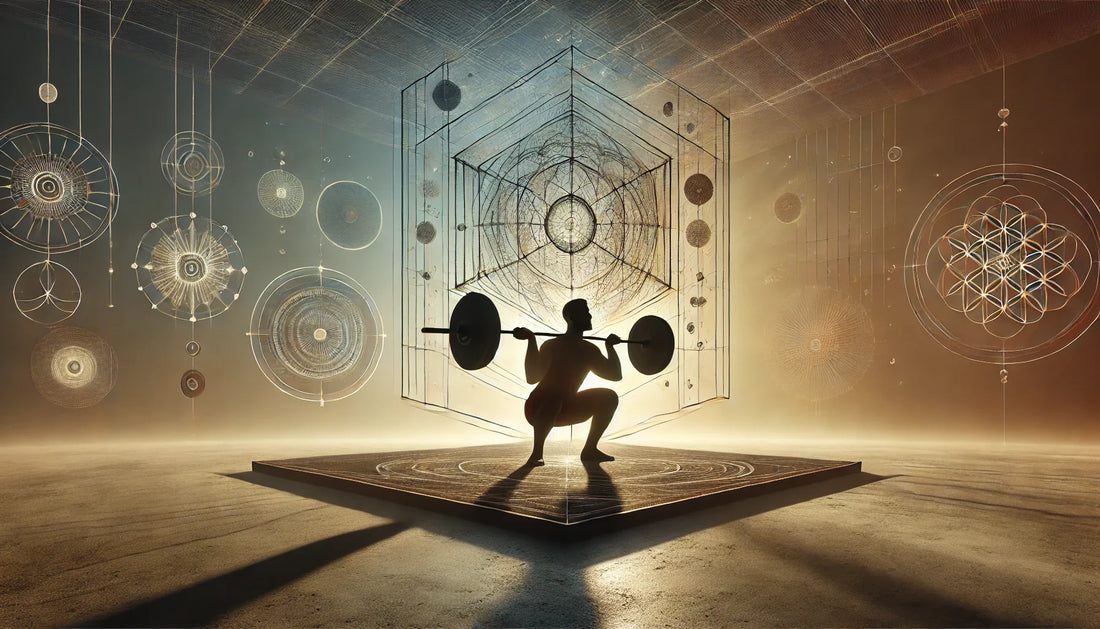
The Weight of Will — Strength as Sacred Geometry
Share
Strength is not noise — it is the quiet geometry of conviction.
It begins not in the gym, but in the unseen corridors of the mind.
Every repetition, every tremor of resistance, is a line drawn between belief and becoming.
Iron, cold and impartial, has no desire to flatter.
It simply reveals: what is real, what is ready, what still remains unformed.
To lift is to converse with truth — the purest, most uncompromising kind.
At PulsePeak Fitness, we regard strength not as domination but as dialogue.
Where others chase numbers, we pursue understanding.
For iron, in its silence, teaches more about humility than triumph —
more about balance than victory.
To be strong is not merely to conquer resistance,
but to carry grace through gravity.
1) The Geometry of Effort
Strength, at its essence, is design.
Each lift traces an invisible architecture — force aligned with focus,
breath aligned with purpose, repetition aligned with rhythm.
The barbell is a compass,
its weight pointing always toward self-awareness.
Through geometry, we learn symmetry:
how tension supports form, how alignment protects intention.
At PulsePeak, we see each rep as a shape of will —
a circle of breath, a line of focus, a triangle of balance.
This is not exercise; this is architecture.
Q & A
Q: Why compare strength to geometry?
A: Because discipline is structure, and repetition is proportion.
Strength follows pattern — not chaos — and design reveals the soul of endurance.
2) The Dialogue of Resistance
Resistance is not the adversary — it is the instructor.
Without opposition, the will cannot refine itself.
Every ounce of strain is an invitation to listen:
What do I truly believe I can bear?
Iron is a patient teacher.
It does not yield easily, nor should it.
For it is through resistance that reverence is born —
the sacred humility of knowing one’s own edge.
At PulsePeak Fitness, we teach the philosophy of resistance:
that effort, when embraced with grace, becomes revelation.
Q & A
Q: How does resistance shape character?
A: It exposes the unseen structure of spirit —
the framework built not from strength alone, but from faith in one’s persistence.
3) The Weight and the Word
Every weight lifted speaks.
The clang of steel is not sound but sermon —
reminding us that gravity is the language through which the universe tests intention.
In that sound lies ritual.
Each repetition becomes a prayer,
each rest a moment of devotion.
We lift not to prove ourselves to others, but to meet ourselves again — honestly, without ornament.
At PulsePeak, we believe strength is spiritual literacy:
to read the body as scripture,
to translate resistance into revelation.
Q & A
Q: Can strength training be spiritual?
A: Yes. Every lift is both ascent and surrender —
a conversation between finite flesh and infinite will.
4) The Architecture of Discipline
Discipline is not punishment — it is patience made visible.
The body learns only what the mind repeats with respect.
Consistency, not intensity, builds the temple of endurance.
At PulsePeak Fitness, discipline is a design principle.
We build it layer by layer: ritual, rhythm, reflection.
A missed day is not failure; it is a fault line in structure —
one that invites rebuilding with greater awareness.
Q & A
Q: How does one sustain discipline without burnout?
A: By replacing pressure with purpose.
When discipline is born of devotion, it becomes sustainable — even sacred.
5) The Elegance of Effort
True power is quiet.
The strongest athletes do not roar — they breathe.
They lift not to impress, but to understand;
they move not to conquer, but to commune.
Strength, like art, demands restraint.
The sculptor knows when to stop; the lifter must too.
To overtrain is to vandalize the very form one wishes to perfect.
At PulsePeak, we teach the aesthetics of endurance —
to find beauty not in exhaustion, but in equilibrium.
Q & A
Q: What defines elegant strength?
A: Control.
Effort guided by awareness, tension balanced by grace.
Power that listens before it speaks.
6) The Will Within the Weight
All weight is metaphor — gravity made moral.
To lift is to affirm that the human spirit still rises.
Each repetition writes an invisible vow: I will not collapse beneath my own becoming.
At PulsePeak Fitness, we call this the sacred geometry of will.
It is where intention finds symmetry,
and symmetry finds peace.
Strength, in its truest form, is not loud — it is luminous.
It needs no applause, no spectacle,
for it knows that what is lifted in silence lasts the longest.
Q & A
Q: How can I train for both power and peace?
A: Align your purpose with patience.
Lift not only for the body you wish to build,
but for the balance you wish to become.
Conclusion
Strength is not a measure of mass but of meaning.
It is the architecture of endurance — designed by discipline, sustained by humility, perfected by faith.
At PulsePeak Fitness, we lift not only weights,
but the weight of the human condition:
doubt, fatigue, fear — all transmuted through rhythm into resilience.
Because when resistance meets reverence,
lifting becomes luminous, and will becomes form.
